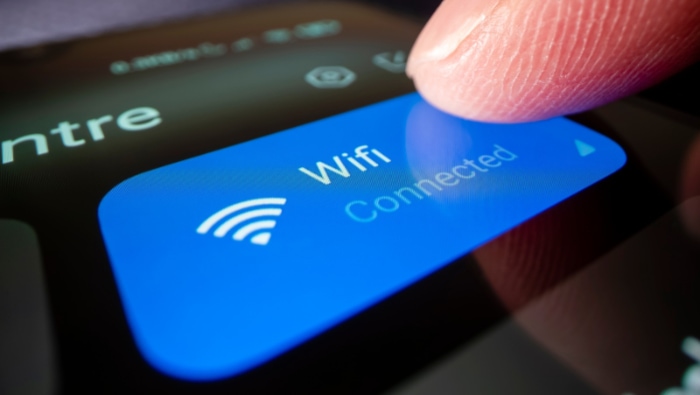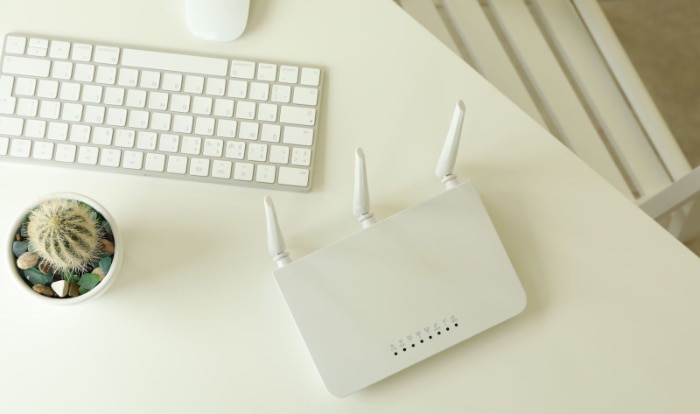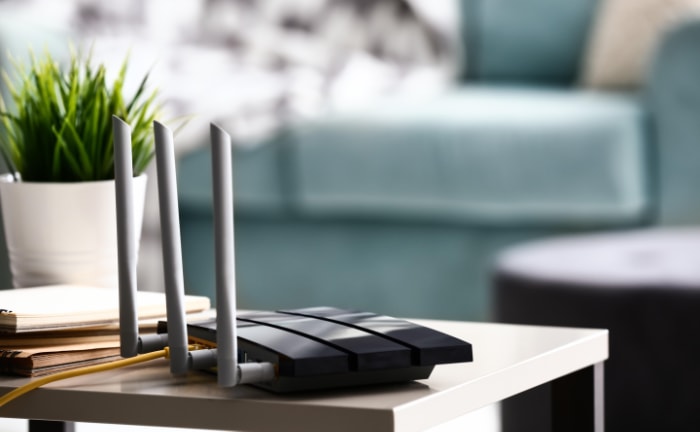Should You Hide Your Wi-Fi SSID? Exploring Pros and Cons

Your Wi-Fi network’s name, or SSID (Service Set Identifier), is what makes it visible to devices in your home or office. Most routers broadcast this name to nearby devices, making connections quick and convenient.
But some people choose to hide their SSID, believing it adds an extra layer of security by making the network invisible to casual users. It sounds logical—if others can’t see your network, they can’t try to access it. But does this approach really protect your Wi-Fi, or is it more trouble than it’s worth?
Understanding SSID Hiding: How It Works
Hiding your Wi-Fi network’s Service Set Identifier (SSID) is a configuration option that prevents your network name from appearing on the list of available networks when nearby devices search for Wi-Fi. While the network doesn’t show up publicly, it doesn’t disappear entirely; instead, it becomes a “hidden network” that requires manual input of the SSID and password to connect.
This practice gives the impression of added security, as casual users won’t see the network name unless they know exactly what to look for. However, behind the scenes, the process of hiding your SSID involves more than simply flipping a setting on your router.
For a hidden network to function, communication between the router and connected devices still occurs, but it’s handled slightly differently compared to visible networks.
What Does “Hiding an SSID” Mean?
When a router broadcasts an SSID, it actively “advertises” its presence to nearby devices. This allows users to easily find and select the network from a list of available options.
Hiding the SSID disables this broadcast, effectively making the network invisible during a standard Wi-Fi scan. However, this doesn’t mean the network is completely undetectable; it simply requires more deliberate steps to locate and connect.
To access a hidden network, users must manually input the SSID along with the corresponding password. This is often seen as an inconvenience, particularly for guests or new devices attempting to join the network.
While the absence of a broadcast seems like an effective security measure, hidden SSIDs continue to transmit data that technically reveals their presence, even if the name itself isn’t visible in Wi-Fi scans.
How Routers and Devices Communicate Without Broadcast Signals
When a network’s SSID broadcast is disabled, the router still sends out packets of data, allowing previously connected devices to recognize and reconnect to the network. These packets include subtle identifiers necessary for maintaining a connection, ensuring the network remains functional despite its hidden status.
Similarly, devices searching for the network send out “probe requests,” essentially asking nearby routers whether a specific SSID is available.
This back-and-forth communication allows devices to stay connected to hidden networks, but it also inadvertently exposes the network to anyone using advanced tools like Wi-Fi sniffers. While hidden networks won’t show up on basic Wi-Fi scans, specialized software can intercept probe requests and other signals to detect their presence.
This exchange highlights the limitations of SSID hiding, as it does not completely obscure the network but instead shifts how devices interact with it. Though it can reduce visual clutter in crowded areas, the process itself offers little in terms of genuine security or invisibility.
The Security Myth: Why Hiding SSID Fails

At first glance, hiding your SSID may seem like a simple way to protect your Wi-Fi network. After all, if potential intruders can’t see your network name on their devices, it might feel like an extra layer of security is in place.
However, the reality is much different. Hiding your SSID does little to make your network safer and can even introduce new vulnerabilities. To understand why, it’s important to look at how wireless networks operate and why SSID hiding doesn’t hold up as a robust security measure.
No Protection Against Detection
Although your network name won’t show up on the standard Wi-Fi list when an SSID is hidden, it’s far from invisible. Tools like packet sniffers, which are widely available, can easily detect hidden networks.
These tools analyze wireless traffic and can identify all nearby networks based on the data packets they emit, regardless of whether the SSID broadcast is turned on or off.
What’s more, when devices attempt to connect to a hidden network, they send probe requests that include the SSID. This means that even though your network name might not appear on a basic scan, it can “leak” through these requests and become apparent to anyone actively monitoring local wireless activity.
In short, hiding your SSID doesn’t stop tech-savvy individuals from discovering your network; it simply requires them to use slightly more advanced tools.
Increased Targeting Risk
Ironically, hiding your SSID can attract unwanted attention rather than deter it. Hackers and malicious actors often scan specifically for hidden networks, as these are sometimes perceived as containing valuable or sensitive information.
The logic is simple: if a network is hidden, it gives the impression that there’s something worth protecting. This perception can make hidden networks a target for intrusion attempts, even when the SSID is otherwise unremarkable.
Additionally, because a hidden network still emits signals during communication, it can stand out even more to those using specialized detection tools. Instead of blending in with other visible networks, a hidden SSID can appear as an anomaly, drawing curious or malicious individuals to investigate further.
False Sense of Security
One of the biggest issues with hiding an SSID is that it creates a false sense of security. SSID hiding does nothing to prevent common threats, such as brute-force hacking attempts, interception of unsecured data, or attacks on outdated security protocols.
These risks are tied to factors like encryption strength and password quality, which are unrelated to the visibility of your network name.
Relying on SSID hiding as a primary security measure could lead to complacency, with users neglecting more effective practices like enabling WPA3 encryption or using strong, unique passwords. Without these safeguards, even a hidden network is extremely vulnerable to attack.
Ultimately, hiding your SSID may give the impression of increased security, but it provides no meaningful protection against modern threats.
Usability Challenges and Performance Drawbacks

Hiding your SSID might seem like a small sacrifice for added security, but it often creates unnecessary complications for users and devices alike. From frustrating connection setups to disruptions in performance, the drawbacks can quickly outweigh any perceived benefits.
Manual Connection Headaches
One of the most noticeable inconveniences of hiding your SSID is the extra effort required to connect new devices. Since the network name will not appear in the list of available Wi-Fi options, anyone wishing to join must manually enter the SSID alongside the password.
While this might be manageable for tech-savvy users, it is often tedious and confusing for guests, family members, or anyone unfamiliar with the need to input the network name manually.
Operating systems like Windows, iOS, and Android do allow for manual entry of hidden networks, but the process is not always intuitive. For example, users may need to navigate through advanced settings or troubleshoot to ensure the information is entered correctly.
This adds unnecessary friction, particularly compared to the simple tap-and-connect process offered by visible networks.
Roaming Disruptions
If you use multiple access points within your home or office to improve Wi-Fi coverage, hiding your SSID can create further complications. Devices like smartphones and laptops rely on seamless handoffs between access points as users move around, ensuring uninterrupted connectivity.
However, with a hidden SSID, these devices may struggle to maintain a stable connection.
The difficulty lies in the way devices locate hidden networks. Since the SSID is not actively broadcast, devices must continuously send out probe requests to search for the network.
This process can cause delays or failures when transitioning between access points, leading to dropped connections or interruptions in service. For environments where roaming is critical, such as workplaces or smart home setups, this can be a significant disadvantage.
Network Overhead
Performance issues are not limited to connection stability. Hiding an SSID can also create unnecessary network overhead by forcing devices to send constant probe requests to locate the network.
These requests not only broadcast the SSID to anyone using packet sniffing tools, compromising the network’s so-called “hidden” status, but also consume additional resources on the devices themselves.
For mobile devices like smartphones and tablets, this process can have a noticeable impact on battery life. Every additional probe request consumes power, particularly when the network connection is not immediately established.
Over time, this drain can add up, especially for users who frequently move between locations.
Hiding an SSID might seem like a harmless tweak, but the usability and performance challenges it introduces can quickly become frustrating. From making manual connections harder to creating inefficiencies in how devices and routers interact, it often complicates what should be a straightforward process.
Better Alternatives for Securing Your Wi-Fi

Rather than relying on ineffective methods like hiding your SSID, employing proven security measures can better protect your Wi-Fi network from potential threats. These strategies not only strengthen your defenses but also ensure that your network remains functional and user-friendly.
Encryption Protocols
One of the most effective tools for Wi-Fi security is using a strong encryption protocol. Modern routers come with advanced options like WPA3, which offers significant improvements over the older WPA2 standard.
Encryption works by scrambling the data transmitted over your network, ensuring that even if someone intercepts your traffic, they cannot read or misuse the information.
WPA3 is particularly effective because it enhances protection against offline password-guessing attacks and provides superior security for devices with limited processing power, such as smart home gadgets. While WPA2 is still widely used and secure when paired with a strong password, upgrading to WPA3 ensures your network is equipped with the latest defenses.
Encryption protects the actual content of your network traffic—a level of security far beyond what hiding an SSID can offer.
Strong Password Practices
A strong password is one of the simplest and most effective ways to safeguard your Wi-Fi network. Default credentials provided by routers are often weak and well-documented, making them easy targets for attackers.
Setting a custom password that is both complex and unique ensures that unauthorized users cannot gain access.
The best Wi-Fi passwords combine uppercase and lowercase letters, numbers, and symbols to create a long and unpredictable sequence. Avoid common words, phrases, or patterns that could be guessed through brute-force methods.
Additionally, using a password manager can help generate and securely store complex passphrases, saving you the hassle of remembering them.
Strong passwords work hand in hand with encryption to create a secure environment for your network. While hiding your SSID might block casual users from spotting your network, it cannot prevent someone from attempting to brute-force a weak password.
For this reason, focusing on password strength is far more effective than relying on SSID hiding.
Network Segmentation
Network segmentation offers another layer of protection, especially for users who handle sensitive data or have many devices connected to their Wi-Fi. By creating separate virtual networks, such as VLANs (Virtual Local Area Networks), you can isolate certain types of traffic and limit access to critical resources.
For instance, you could place your smart home devices or IoT gadgets on one VLAN while keeping your personal computers and smartphones on another.
In addition to VLANs, utilizing a VPN (Virtual Private Network) can add further security by encrypting your internet traffic and masking your IP address. While this doesn’t directly protect your Wi-Fi from local attacks, a VPN prevents your data from being intercepted by external threats while it travels over the internet.
Segmentation not only secures your sensitive information but also helps minimize the impact of any potential breaches. Even if one network segment is compromised, the isolation ensures that other devices and data remain protected.
This proactive approach surpasses the limited benefits provided by SSID hiding and creates a more robust security framework for your network.
When Might Hiding an SSID Still Make Sense?

While hiding an SSID is not an effective standalone security measure, there are certain situations where it may serve a practical or administrative purpose. In specific scenarios, this setting can reduce visual clutter, simplify short-term tasks, or complement stronger network protection strategies.
However, it’s important to remember that in these instances, hidden SSIDs should always be paired with other security measures to ensure your network remains safe.
Reducing Network Clutter
In high-density environments, such as apartment complexes, office spaces, or dormitories, the list of available Wi-Fi networks can become overwhelming. With so many routers broadcasting SSIDs in close proximity, the sheer number of visible networks can make it difficult for users to navigate and connect to the correct one.
Hiding an SSID can help minimize this clutter by removing your network name from the long list of options displayed on nearby devices. This is especially useful in professional settings where multiple sub-networks or departmental connections exist, as it prevents employees or guests from mistakenly attempting to join the wrong network.
Although this approach can streamline the user experience in visually crowded areas, it’s important to emphasize that hiding an SSID does not prevent others from detecting your network entirely. For any environment where security is a concern, encryption and strong passwords must still be a priority.
Niche Administrative Uses
Hiding an SSID can also be beneficial for temporary or specialized networks. For example, when setting up IoT devices or conducting IT troubleshooting, hiding the network can reduce the likelihood of unrelated users attempting to connect while the work is in progress.
In some cases, IT administrators may use hidden SSIDs for private testing environments or to isolate specific devices during configuration. This can ensure that only those who have explicit knowledge of the hidden network’s details are able to connect, which can simplify certain technical tasks.
Despite these advantages, hidden SSIDs in these scenarios are often a matter of convenience rather than security. For long-term or permanent networks, more robust measures like segmentation, encryption, or password-protected access should always take precedence.
Combined With Other Security Measures
If hiding an SSID is used at all, it must be treated as a supplementary feature within a broader security strategy. On its own, it provides little protection and can even present usability challenges.
However, when combined with advanced encryption protocols, strong passwords, and active network monitoring, it can contribute to a layered approach to security.
For example, a hidden SSID might deter casual users or unintentional connection attempts while encryption and authentication protocols do the heavy lifting to prevent malicious activity. This layered approach can add an extra step, however small, to keep unauthorized users from accessing your network.
It’s important to remember that hidden SSIDs should never replace core security measures. Instead, they can serve as a small piece of a larger framework designed to protect your data and devices from unauthorized access.
In these limited cases, hiding your network’s SSID may be helpful, but it’s never a substitute for robust and proven security practices. Any potential benefits are significantly enhanced when the technique is paired with encryption, proper network management, and other reliable protective measures.
Conclusion
Securing your Wi-Fi network goes far beyond simply hiding its SSID. While this feature may have limited usefulness in reducing network clutter or addressing specific administrative needs, it offers little to no actual protection against modern threats.
Hidden networks remain detectable through basic tools, can inadvertently draw more attention, and may create unnecessary usability and performance issues.
Instead of relying on SSID hiding, prioritizing proven measures like strong encryption protocols, robust passwords, and network segmentation provides far greater security and reliability. These methods not only safeguard your data but also ensure that your network remains user-friendly and efficient.
A layered approach to security, built on strong foundations, ensures that your Wi-Fi can withstand potential threats while supporting the needs of all its users.

